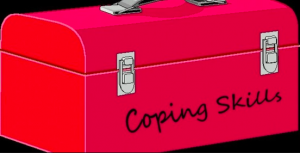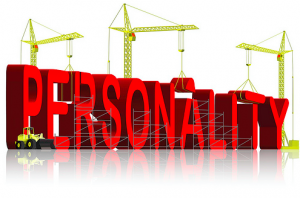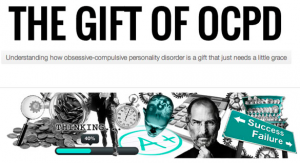A New Way of Thinking about Coping Styles in Schema Therapy
Cathy Flanagan, one of the original developers of the schema therapy model with its founder, Jeffrey Young, recently published an article in the American Psychological Association’s Journal of Psychotherapy Integration (2014 Vol. 24, No 3, 208-222) where she describes eight modes, or coping styles, that healthy individuals experience. Modes are distinct patterns representing coping strategies to help individuals adapt to situations and to satisfy needs.
In contrast, maladaptive modes or coping styles are extreme forms of normal patterns of adaptation. Each of the eight healthy modes has a corresponding dysfunctional extreme that can become chronically dysfunctional ways of experiencing the self and relating to others.
Healthy and Maladaptive Coping Styles in Schema Therapy
Below are the eight healthy adult modes and the corresponding maladaptive mode that may develop when the strategies are used in excess (the definitions are extracted and summarized from Flanagan’s article).
1. Leader: Behavior, thinking and feelings are all “active.” The Leader is in control, thinking constructively, and openly expressing feelings. Leaders are in touch with both their own needs and the needs of others.
Leader becomes Bully: The Bully operates by demeaning and controlling. Bullies need validation and respect but they elicit hostility and resentment, maintaining a vicious cycle.
2. Caretaker: Caretakers are mentally and physically “on,” and focused on meeting the needs of others. Connection is prioritized and the person’s own needs and feelings come second to those of others.
Caretaker becomes the Martyr: Martyrs do not express their needs but expect that their obvious self-sacrifice will make others respond in kind. The result is a build up of resentment. Martyrs’ excessive need for affirmation induces guilt with the self-defeating effect of making other people pull away.
3. Free Spirit: The Free Spirit actively pursues goals, and reacts in the spirit of the moment. This is a “feel good,” autonomous mode.
Free Spirit becomes Rebel: Rebels have an impulsive, or oppositional style. Rebels’ exaggerated needs for autonomy and change ironically elicit a reaction of correction and control, reinforcing the cycle of rebellion.
 4. Deliberator: Deliberators thoughtfully weigh the possible costs and benefits of different courses of action until a level of certainty is reached. Daydreams and fantasies are entertained for possible action at a later stage.
4. Deliberator: Deliberators thoughtfully weigh the possible costs and benefits of different courses of action until a level of certainty is reached. Daydreams and fantasies are entertained for possible action at a later stage.
Deliberator becomes Worrywart: An excessive need for certainty and an intolerance of ambiguity lead to obsessional thinking and behavioral avoidance. Worrywarts avoid acting or taking risks until they are sure of the outcome. Chronic obsessing or indecision can result in procrastination, reassurance seeking, or resentful dependency.
5. Doer: This mode is defined by action and a single-minded focus on getting a job done or project finished. Doers do not think beyond the task at hand. This can be effective in appropriate doses.
Doer becomes Controller: Controllers are closed to feedback from others. When projects are complete, they go straight to the next one, reaching goals with little sense of satisfaction or connection with other people.
6. Strategizer: Here the pros and cons of various strategies are carefully and dispassionately considered. The focus is on thinking over feelings. Action is suspended until it is considered appropriate or timely.
Strategizer becomes Schemer: For Schemers, life is a battle of wits, a game of chess. This is an impersonal, observing mode. Thinking predominates and results in covert manipulations and passive-aggression. This mode precludes authentic connections with others.
7. Emoter: The Emoter openly expresses his or her feelings, either to get urgent needs met or because the context elicits them. Problem-focused thinking and action are secondary to the immediacy of affect.
Emoter becomes Overreactor: Emotional outbursts, which are intended to elicit validation or reassurance, backfire and can produce rejection or ridicule. Frantic efforts to maintain stability and connection are self-defeating in the same way as a child’s temper tantrum.
8. Follower: This is a “low key” mode. The Follower is content to hand over control. This mode may also represent a period of “down time” or rest. Obviously, not everyone can or should be a Leader so Followers contribute greatly in society.
Follower becomes Victim: This is a markedly passive, subjugated mode where affect is flat, detached, or depressed. Victims need connection, stability, and validation but, by shutting down, the likelihood of getting these needs met is decreased even more.
Therapy Implications for Working with Coping Styles
 This model of healthy and maladaptive coping styles provides opportunities for therapists to consider which tools might be used most effectively with different clients, or at different stages of the therapy process. For example, cognitive reframing, emotional regulation, and behavioral skills training might be strategically utilized to modify certain maladaptive modes. Other tools, such as guided imagery or mindfulness meditation, could be used as appropriate. The point is not so much to specify the exact choice of technique but to target specific mode components with whichever tools are likely to be most effective in the individual case. This will help the client to gradually learn to recognize his/her unhelpful coping styles and to consciously decrease the intensity of these maladaptive components or switch to another, more effective, coping style.
This model of healthy and maladaptive coping styles provides opportunities for therapists to consider which tools might be used most effectively with different clients, or at different stages of the therapy process. For example, cognitive reframing, emotional regulation, and behavioral skills training might be strategically utilized to modify certain maladaptive modes. Other tools, such as guided imagery or mindfulness meditation, could be used as appropriate. The point is not so much to specify the exact choice of technique but to target specific mode components with whichever tools are likely to be most effective in the individual case. This will help the client to gradually learn to recognize his/her unhelpful coping styles and to consciously decrease the intensity of these maladaptive components or switch to another, more effective, coping style.
How to Get Help to Improve Your Coping Styles
The Cognitive Behavior Therapy Center of Silicon Valley offers schema therapy to help you develop more effective coping styles. We are located in Saratoga on the border of San Jose and Saratoga just a 1/2 mile from Highway 85. With our convenient location near highway 85, we serve the Silicon Valley communities of San Jose, Saratoga, Mountain View, Santa Clara, Sunnyvale, Los Gatos, Los Altos, Cupertino and Campbell, CA. In addition, we offer Online Video Therapy for adults in California who are unable to find a qualified schema therapist in your local community. Call us at (408) 384-8404 to learn more about our schema therapy program.



